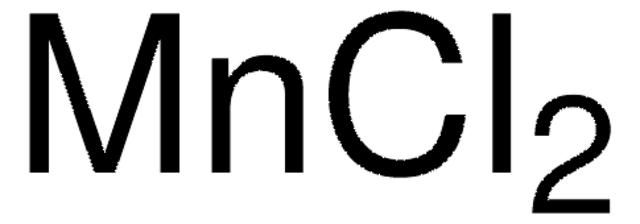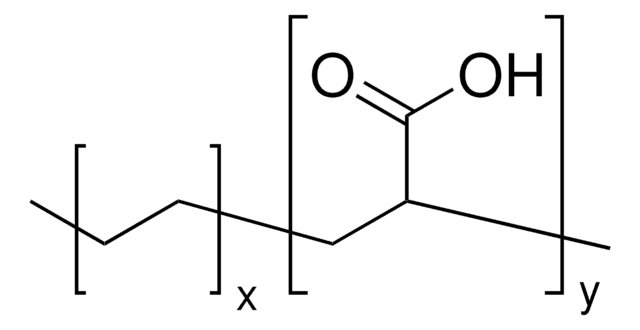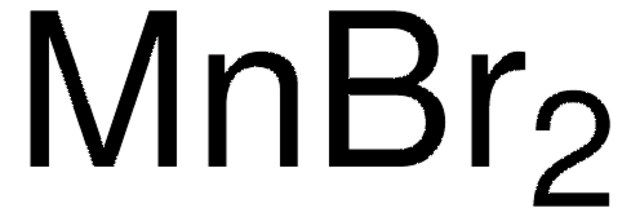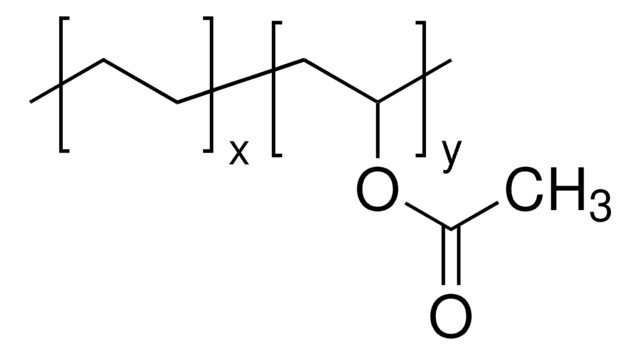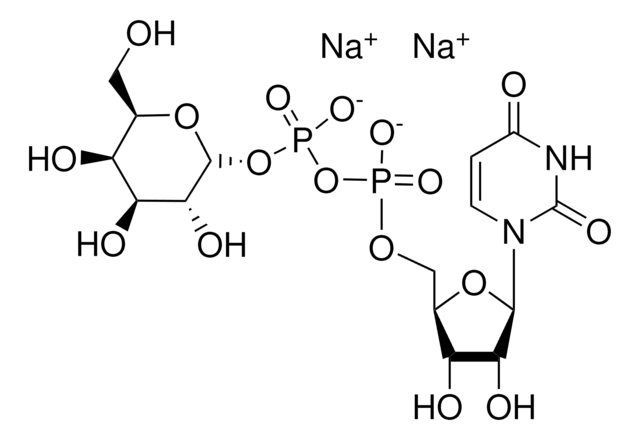Wichtige Dokumente
429449
Mangan(II)-chlorid
AnhydroBeads™, −10 mesh, 99.99% trace metals basis
Synonym(e):
Mangandichlorid, Sacchit
About This Item
Empfohlene Produkte
Produktlinie
AnhydroBeads™
Qualitätsniveau
Assay
99.99% trace metals basis
Form
beads
Verunreinigungen
≤150.0 ppm Trace Metal Analysis
Partikelgröße
−10 mesh
mp (Schmelzpunkt)
652 °C (lit.)
Dichte
2.98 g/mL at 25 °C (lit.)
Anwendung(en)
battery manufacturing
SMILES String
Cl[Mn]Cl
InChI
1S/2ClH.Mn/h2*1H;/q;;+2/p-2
InChIKey
GLFNIEUTAYBVOC-UHFFFAOYSA-L
Suchen Sie nach ähnlichen Produkten? Aufrufen Leitfaden zum Produktvergleich
Verwandte Kategorien
Allgemeine Beschreibung
Anwendung
- A precursor in the preparation of manganese oxide coated natural spherical graphite materials, which are used for improving the electrochemical performance of the graphite materials, making them suitable for applications in batteries and supercapacitors.
- A key component in the preparation of polyvinyl alcohol/manganese chloride composite films, which are find potential applications in areas such as sensors, energy storage devices, and flexible electronics due to their improved optical, mechanical, and thermal properties.
- A precursor in the synthesis of Mn-doped CsPbCl3 perovskite nanocrystals for enhancing their optical properties and quantum yield, which are vital for their application in improving the efficiency of solar cells.
- A catalyst for the transfer dehydrogenation of glycerol to lactic acid.
Rechtliche Hinweise
Sie haben nicht das passende Produkt gefunden?
Probieren Sie unser Produkt-Auswahlhilfe. aus.
Zubehör
Signalwort
Danger
H-Sätze
Gefahreneinstufungen
Acute Tox. 3 Oral - Eye Dam. 1 - STOT RE 2
Zielorgane
Brain
Lagerklassenschlüssel
6.1D - Non-combustible acute toxic Cat.3 / toxic hazardous materials or hazardous materials causing chronic effects
WGK
WGK 2
Flammpunkt (°F)
Not applicable
Flammpunkt (°C)
Not applicable
Persönliche Schutzausrüstung
dust mask type N95 (US), Eyeshields, Faceshields, Gloves
Hier finden Sie alle aktuellen Versionen:
Besitzen Sie dieses Produkt bereits?
In der Dokumentenbibliothek finden Sie die Dokumentation zu den Produkten, die Sie kürzlich erworben haben.
Kunden haben sich ebenfalls angesehen
Artikel
Lithium-Ion Battery Performance: Dependence on Material Synthesis and Post‑Treatment Methods
Thermoelectric Performance of Perovskite-type Oxide Materials
The prevailing strategies for heat and electric-power production that rely on fossil and fission fuels are having a negative impact on the environment and on our living conditions.
Unser Team von Wissenschaftlern verfügt über Erfahrung in allen Forschungsbereichen einschließlich Life Science, Materialwissenschaften, chemischer Synthese, Chromatographie, Analytik und vielen mehr..
Setzen Sie sich mit dem technischen Dienst in Verbindung.